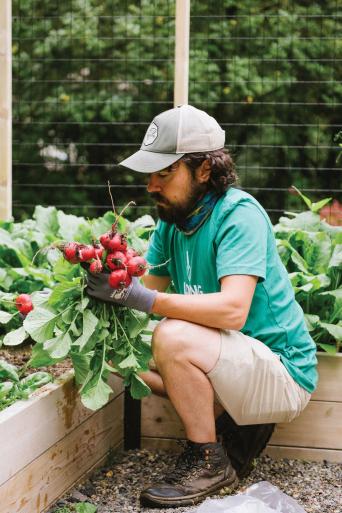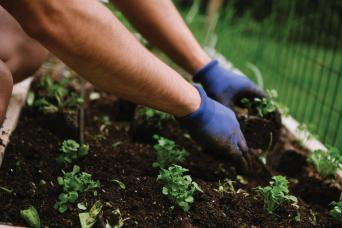
The Time to Start a Garden is Now — and Here’s Why
Everybody knows that spring is the time for gardening. Meanwhile, nurseries, garden centers, gardeners, and the like wonder why business slows down every year in the fall, because that can be the best time for many new garden activities.
Autumn’s underappreciated primacy for many things gardening is one reason I hosted “Fall is for Gardening!”, a Weavers Way online workshop, last month. Here are a few of the reasons you’ll want to brush off the blood, sweat and tears (but mostly sweat) from your summer garden activities and roll up your flannel this fall.
Discover the magic of cool season vegetables. While tomatoes, peppers, melons, and squash get all the summertime limelight, fall belongs to leafy greens, root vegetables, and cole crops that are equally exciting and transformative when grown in the proper season. A magical thing happens in the fall called “winter sweetening,” in which these veggies actually taste sweeter after the first frosts. According to the PennState Extension website, this effect is due to their ability to convert starch into sugars, which act as an anti-freezing agent for their cells.
Also, cilantro and dill are actually cool season herbs. If you’ve had trouble with them before, try sowing some seed now, and every other week until November for a steady supply.
Bring your edible perennial plans to fruition. Pun intended; fall is a better time to plant fruits. For planting cherished perennial fruits like blueberry, blackberry, raspberry, apple, peach, pear, and paw paw that will provide a bountiful harvest for years to come, fall is best. As fruit researcher and author Lee Reich, PhD says in his book “Grow Fruit Naturally.”
“Soil temperatures cool slowly in autumn, allowing some root growth even on leafless plants. And if you plant in autumn, when spring finally does arrive, the plant is...ready to grow.”
Specifically, fall planting for fruits and berries can be done anytime before the first frost, or about the end of October for our region. I should note that one “fruit” that doesn’t like to be planted in fall is the fig. The roots of a new fig may survive a winter if fall planted, but the above-ground part will be even less likely to survive than usual, even with the best built protection. Figs are better planted in spring.
It’s a win-win if you decide you need help. Just speaking from experience here, the spring for a landscape contractor is mad. At a time when everyone wants garden services, you might have trouble getting someone’s attention, a timely quote, or execution of the work. In the fall, you’ll encounter a different scenario. My business, for one, is offering free consults and a discount on new installations. When you use garden help or shop your local garden center in the fall, you’re helping people who have dedicated themselves to a notoriously challenging and seasonal line of work. Your patronage in the fall might just mean the difference between a seasonal layoff and a livelihood.
Bonus: this year is different. This fall will be more different than any other fall most of us have ever known. Ever the optimist, I’ll point to the bright side. You’re reading this article, which means you have the knowledge you need to unlock one of the most magical experiences that being a human has to offer. Gardening is a technological portal to the miracles and wonder of Mother Nature, and a productive and physical hobby that brings a sense of empowerment, the joy of learning a new skill, unexpected changes in diet and taste toward the fresh and nutritious, and the establishment of a physical space for quiet reflection to boot.
Don’t hesitate to grow something today. The sooner you get started, the more fun you’ll have.

